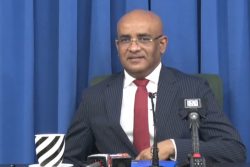 Often, a tenant will want to buy and affix an item to a property to enhance his/her enjoyment of it. It can be a mounted television, an air conditioning unit, or a cupboard. These and other items are referred to in law as fixtures. A fixture is any previously movable property that has now become affixed to the residential property.
Often, a tenant will want to buy and affix an item to a property to enhance his/her enjoyment of it. It can be a mounted television, an air conditioning unit, or a cupboard. These and other items are referred to in law as fixtures. A fixture is any previously movable property that has now become affixed to the residential property.
This can happen in various ways. Bolts, nuts and screws are the most common ways televisions and air condition units are affixed, and in some cases, installation may require perforations to the property.
The way in which such items are commonly affixed to the property usually means that they cannot be removed without, at the least, leaving unsightly holes. For this reason, some landlords insist that anything affixed to their property must not be removed by the tenant at the end of the tenancy. Usually, an offer is made to compensate the tenant.
Did you know, however, that there are laws regulating such matters? Section 15 of the Landlord and Tenant Act, Cap 61:01, Laws of Guyana, is instructive.
As long as certain conditions are met, a tenant is permitted under law to, as long as he/she wishes, remove any fixture he/she installs on a landlord’s property, including the land itself.
If you install a TV and mount it to the wall, you can remove it before or when you leave. If you install cupboards and want to remove them before or when you leave, you can. Additionally, if you build a shed in the yard to hold your tools, you are not obligated to leave it there when you leave, though you can choose to do so.
So what are the conditions?
Landlord’s right to purchase fixtures
This is not the first condition stated in the Act but perhaps the most important. Once the tenant issues a notice of removal, the landlord has the right to elect to purchase the fixture or building before the expiration of the notice period. If the landlord exercises this right, the fixture remains on the property and becomes the landlord’s property. The landlord must then compensate the tenant based on the fair market value of the fixture as if it were being transferred to a new tenant. If the tenant and landlord disagree on the value, either party can seek a determination from the magistrate of the district where the property is located.
Rent and other obligations must be settled
Before removing any fixture or building, the tenant must pay all outstanding rent and fulfil all other obligations owed to the landlord. This ensures that the landlord does not suffer financial loss due to unpaid rent or other breaches of the lease agreement.
Avoidable damage must be prevented
When removing fixtures or buildings, the tenant must take all necessary precautions to avoid causing damage to other structures on the property. This prevents unnecessary harm to the landlord’s property and ensures that only the intended items are removed.
Repairs after removal
If any damage occurs during the removal process, the tenant is responsible for making the necessary repairs without delay. This entails restoring any affected areas of the property to their original condition prior to departure.
Notice of removal to the landlord
A tenant must give the landlord at least one month’s written notice before removing a fixture or building. This gives the landlord sufficient time to make any necessary arrangements or decide whether to purchase the fixture.
Why these conditions matter
These conditions serve to balance the interests of both the landlord and tenant. They ensure that tenants have the right to remove what they lawfully installed while also protecting landlords from unpaid obligations, unnecessary damage, and unexpected removals. Additionally, by allowing landlords the first option to purchase, the law provides a structured way to resolve disputes over fixtures fairly.
Removing fixtures from a leased property is not as simple as just taking them away at the end of the lease. Tenants must first clear their financial obligations, take precautions against damage, notify the landlord in advance, and repair any resulting damage. Moreover, landlords can purchase the fixture before it is removed. These rules help ensure a smooth transition at the end of a lease, protecting both parties and maintaining the integrity of the property.









